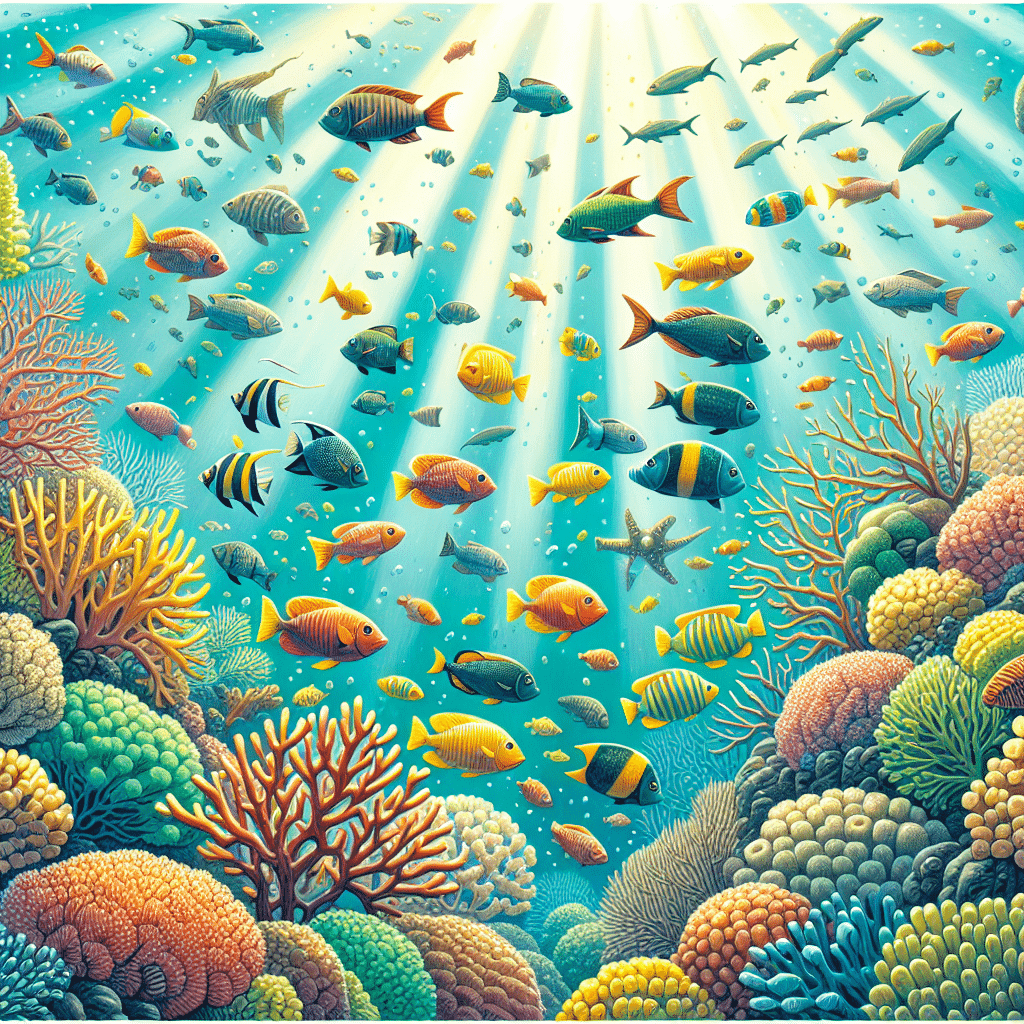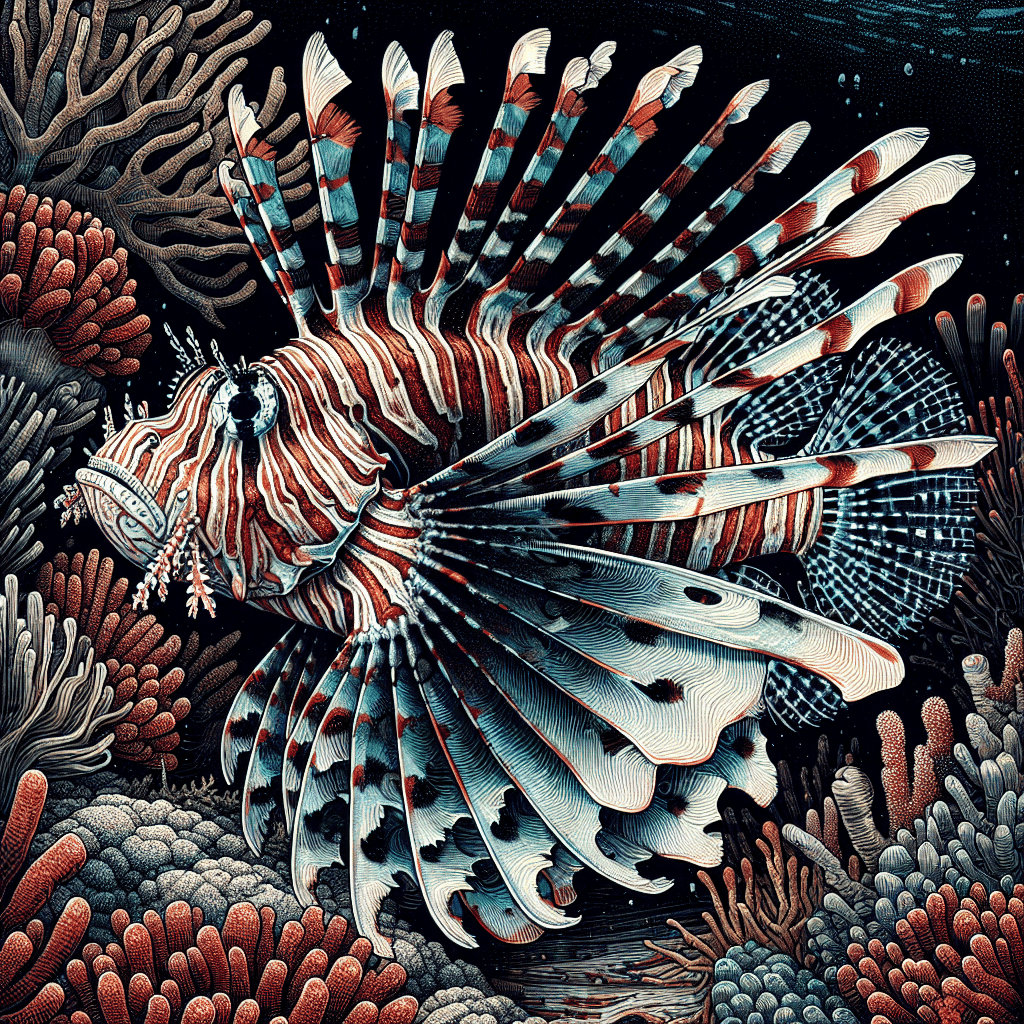Discovering Eels
Fascinating World of Eels
I’ve always been intrigued by eels. They belong to a diverse group with more than 800 species, and freshwater eels are particularly popular among aquarists. Their unique adaptations and behaviors make them fascinating creatures to observe and care for. Eels can vary significantly in size, ranging from 5 cm (2 in) to an impressive 4 m (13 ft), and they can weigh anywhere from 30 g (1 oz) to over 25 kg (55 lb) (Ocean Exist).
Here’s a quick glance at some of the sizes of notable eels:
| Eel Type | Length | Weight |
|---|---|---|
| Average Freshwater Eel | 5 cm – 4 m | 30 g – 25 kg |
| European Conger | Up to 3 m | 110 kg |
| Slender Giant Moray | Up to 4 m | Varies |
Eels are quite different from other fish; they lack pelvic fins, and many species also lack pectoral fins. They swim by creating waves that travel along their bodies, allowing them to glide gracefully through the water. Interestingly, eels can even swim backward by reversing the direction of these waves (Wikipedia).
Eels’ Unique Characteristics
One of the most unique aspects of eels is their life cycle. They start as flat, transparent larvae known as leptocephali, which then undergo metamorphosis into glass eels and eventually become elvers. These elvers migrate to their juvenile and adult habitats, often transitioning between freshwater, brackish, and marine environments (Wikipedia).
Eels also have some intriguing biological traits; for instance, their blood is toxic to humans and other mammals. However, this toxic protein is neutralized through cooking and digestion, making eels safe to eat. Additionally, eelskin leather is highly prized for its smoothness and strength, although it actually comes from the Pacific hagfish rather than true eels (Wikipedia).
These characteristics not only make eels interesting to learn about but also highlight the importance of proper care in an aquarium setting. For those of us who enjoy keeping fish like clownfish or lionfish, understanding the unique needs of eels is essential for their health and wellbeing.
Electric Eels in Focus
Electric Eel Habitat and Distribution
I find electric eels to be fascinating creatures, and their habitat is just as intriguing. These unique fish can grow to lengths of 6 to 8 feet (2 to 2.5 meters) and are predominantly found in northern South America. Their range includes countries like Brazil, the Guianas, Suriname, Venezuela, Colombia, Ecuador, and Peru (National Zoo). They thrive in freshwater environments, particularly in slow-moving rivers, swamps, and floodplains.
| Country | Notable Locations |
|---|---|
| Brazil | Amazon River |
| Suriname | Sipaliwini River |
| Venezuela | Orinoco River |
| Colombia | Caquetá River |
| Ecuador | Napo River |
| Peru | Ucayali River |
This broad distribution means electric eels are well-adapted to a variety of freshwater habitats in the region, making them quite versatile in their environmental preferences.
Electric Eel’s Electrifying Abilities
One of the most remarkable aspects of electric eels is their ability to generate electricity. These fish have three specialized electric organs that make up about 80 percent of their body. These organs are used for a variety of purposes, including defense, hunting, communication, and navigation (National Zoo).
The main electrical organ and two-thirds of the Hunter’s organ produce the strongest electric pulses. These pulses can reach up to 600 volts, which is enough to stun prey and deter predators. Here’s a quick overview of their electric abilities:
| Ability | Description |
|---|---|
| Defense | Emits strong shocks to ward off threats |
| Hunting | Stuns prey to facilitate capture |
| Communication | Uses pulses to signal other electric eels |
| Navigation | Helps in locating objects and moving through murky waters |
With these electrifying abilities, electric eels are not just fascinating to observe; they play a crucial role in their ecosystems. If you’re looking to learn more about different fish species, you might want to check out articles on marine fish, or even specific varieties like lionfish and clownfish.
Eel Reproduction
Eel reproduction is a fascinating topic that showcases the unique life cycles and habits of these intriguing creatures. I’ll delve into the reproductive habits of electric eels and the life cycle of European eels, as they both have distinct and interesting processes.
Reproductive Habits of Electric Eels
Electric eels have some unique reproductive behaviors. During the dry season, females lay between 1,200 and 1,700 eggs. After laying the eggs, males take on the responsibility of guarding the larvae in nests made of saliva until the rainy season begins (National Zoo). This nurturing behavior is quite rare in the animal kingdom and highlights the male electric eel’s commitment to ensuring the survival of the young.
There is still much to learn about electric eels’ reproduction. Researchers are working to uncover more details about their spawning habits and the intricacies of their reproductive cycle.
Life Cycle of European Eels
Now, let’s take a look at European eels. They have a remarkable life cycle that starts in the Sargasso Sea, where they are born. The larvae are transparent and drift thousands of miles on Atlantic currents before they transform into bootlace-sized young known as glass eels or elvers upon reaching the shores of eastern Europe.
Once they enter freshwater, these eels develop pigmentation and begin to feed on small crustaceans, worms, and insects. The maturation process can take quite a while, often 10 to 14 years, during which they can grow to a length of 60 to 80 cm.
When they reach maturity, European eels embark on a remarkable migration back towards the sea in July. They sometimes cross wet grasslands at night to find rivers that lead them back to their spawning grounds. This incredible journey is a testament to their resilience and adaptability (Wikipedia).
The reproductive strategies of both electric eels and European eels are just a glimpse into the complex and fascinating world of eel life. If you’re curious about other marine life, you might want to explore the habits of marine fish or consider adding some compatible species to your reef tank.
Conservation Concerns
Threats to Eel Populations
Eels face numerous challenges that threaten their populations and overall survival. One of the most significant threats is the dramatic decline in the number of glass eels arriving at European coasts, which has decreased by over 95% in recent years. This decline is primarily due to several factors, including:
- Dams and Barriers: Dams block migration routes essential for eels to reach their spawning grounds, disrupting their life cycle.
- Illegal Trading: Glass eels are often illegally harvested for fish farms, exacerbating the decline in their numbers.
- Environmental Changes: Pollution and habitat destruction also contribute to the challenges faced by eel populations.
The cumulative effects of these threats have led to a concerning decline in eel reserves, which have fallen by approximately 5% per year for over fifty years. This decline not only affects the species but also impacts the fishing industries and ecosystems that rely on them.
Endangered Status of Eel Species
The conservation status of various eel species is alarming. The European eel (Anguilla anguilla) is listed as Critically Endangered on the IUCN Red List of Threatened Species. Similarly, the Japanese eel (Anguilla japonica) and American eel (Anguilla rostrata) are assessed as Endangered. The severity of their status has led organizations like Greenpeace International to add these species to their seafood red list, highlighting the high risk of being sourced from unsustainable fisheries (Wikipedia).
| Eel Species | Conservation Status |
|---|---|
| European Eel | Critically Endangered |
| Japanese Eel | Endangered |
| American Eel | Endangered |
As a fish tank and reef tank hobbyist, it’s crucial to be aware of these conservation issues. By understanding the challenges faced by eels, I can make informed choices about the species I support and promote sustainable practices in my aquarium. For more information on other marine species and their conservation, check out our sections on marine fish and specific species like lionfish or clownfish.
Eel as Food
Global Consumption of Eels
Eels are a delicacy enjoyed by many cultures around the world, but did you know that Japan is the largest consumer? In fact, Japan consumes more than 70 percent of the global eel catch (Wikipedia). This high demand has led to a thriving eel market, especially for dishes like unagi (grilled eel) and kabayaki (broiled eel).
In the United States, the eel industry is also significant. In 2017, the commercial eel industry in Maine was valued at around $12 million. While not as popular as in Japan, eels still find their way onto menus, particularly in specialty seafood restaurants.
| Country | Percentage of Global Consumption |
|---|---|
| Japan | 70% |
| United States | Significant, $12 million industry in Maine (2017) |
Nutritional Benefits of Consuming Eel
Eel is not just a tasty treat; it also boasts impressive nutritional benefits. Here are some of the highlights:
High in Protein: Eel contains a significant amount of protein, comparable to meat and poultry on a protein-per-gram basis (Nutrition Advance).
Rich in Vitamin D: Eel is a rare dietary source of vitamin D, providing more than half of the daily value per 100 grams. Vitamin D is crucial for immune health and maintaining a strong skeletal system (Nutrition Advance).
Low Mercury Levels: Compared to other seafood, eel has low mercury levels, with a mean mercury content of just 0.085 ppm. This makes it a safer choice regarding heavy metal contamination (Nutrition Advance).
| Nutritional Component | Amount per 100g |
|---|---|
| Protein | High |
| Vitamin D | >50% Daily Value |
| Mercury Content | 0.085 ppm |
Incorporating eel into your diet not only adds variety but also contributes to your overall health. Whether grilled, smoked, or prepared in a sushi roll, eels can be a delectable addition to any meal. For more information on different types of fish and how to care for them in your tank, check out our articles on marine fish and other fascinating species.
Freshwater Eel Varieties
Freshwater eels are fascinating creatures, and as a fish tank enthusiast, I find them to be some of the most intriguing options for my aquarium. There are several types of freshwater eels, each with unique characteristics and care requirements that can make them suitable for different setups.
Types of Freshwater Eels
Here’s a quick overview of some popular types of freshwater eels:
| Eel Type | Maximum Size | Ideal Tank Size | Temperature Range (°F) | pH Level |
|---|---|---|---|---|
| Tire Track Eel | 20 inches | 75 gallons | 75 – 82 | 6.5 – 7.5 |
| Zig Zag Eel | 36 inches in the wild, 24 inches in captivity | 150 gallons | 73 – 82 | Not specified |
| Fire Eel | 40 inches | 125 gallons | 75 – 83 | 6.5 – 7.5 |
| Electric Eel | 6 – 8 feet | 540 gallons | Normal water conditions | Not specified |
Tire Track Eels thrive in larger tanks and are known for their unique patterns. They can adapt well to community tanks if their tank mates are compatible.
Zig Zag Eels are interesting due to their size and require a significant amount of space. They enjoy a varied diet of live and frozen foods.
Fire Eels are among the largest and need advanced care. They thrive in well-planted tanks and require a lot of space to roam.
Electric Eels are not true eels, but they are often included in discussions about freshwater eels due to their fascinating nature. They require an exceptionally large tank and should only be kept by experienced aquarists because of their potential danger.
Care Requirements for Freshwater Eels
Caring for freshwater eels can be a rewarding experience, but it requires understanding their specific needs:
Tank Size: Eels generally need a spacious tank. For example, fire eels need at least a 125-gallon tank, while electric eels require an impressive 540-gallon setup.
Water Conditions: Maintaining the right temperature and pH is crucial. Most freshwater eels thrive in a range of 75°F to 83°F and prefer a pH between 6.5 and 7.5. Regular water testing is vital to ensure a stable environment.
Diet: Freshwater eels are carnivorous and enjoy live or frozen foods. Providing a varied diet helps in keeping them healthy.
Tank Environment: Eels appreciate a well-planted tank with hiding spots. This mimics their natural habitat and helps reduce stress.
Compatibility: It’s important to select tank mates carefully. Some eels can be territorial or predatory, so research is necessary to find compatible species.
If you’re interested in more about the aquatic life, feel free to check out other articles like those on marine fish or specific species like the lionfish and clownfish.
Eel Diversity
As a reef tank hobbyist, I’ve always been fascinated by the variety of eels out there. Eels belong to a diverse group with more than 800 species. Among these, freshwater eels are particularly sought after by aquarists. Let’s dive into some of the diverse eel species and their unique characteristics.
Diverse Eel Species
Here’s a quick overview of some popular freshwater eel species that I find interesting:
| Eel Species | Maximum Size | Tank Size Requirement | Preferred Temperature | pH Level |
|---|---|---|---|---|
| Tire Track Eel | 20 inches | 75 gallons | 75 – 82 °F | 6.5 – 7.5 |
| Zig Zag Eel | 36 inches | 150 gallons | 73 – 82 °F | Not specified |
| Fire Eel | 40 inches | 125 gallons | 75 – 83 °F | 6.5 – 7.5 |
| Electric Eel | 6 – 8 feet | 540 gallons | Normal water conditions | Not specified |
The Tire Track Eel is a striking species found in South Asia. It thrives in larger tanks and is known for its unique coloration. The Zig Zag Eel can grow up to 36 inches in the wild but might reach 24 inches in captivity. It requires a spacious tank and lives happily with the right care. The Fire Eel is one of the largest freshwater eels, reaching a whopping 40 inches. These eels need advanced care and a well-planted environment.
Lastly, the Electric Eel is quite notorious. Growing up to 6 to 8 feet, it’s not just fascinating but also potentially dangerous. It produces electric currents to stun prey, and I always recommend caution if you’re considering one for your tank.
Characteristics and Behavior of Eels
Eels have a few unique behaviors that make them special in the aquarium world. They are generally nocturnal, meaning they are more active during the night. This behavior can make them a bit shyer during the day, often hiding in rocks or plants, which is something to keep in mind when setting up their environment.
Most eels are carnivorous, so they typically require a diet of live or frozen foods. This includes options like shrimp, fish, and worms. Understanding their feeding habits is essential for keeping them healthy. Additionally, eels can be quite territorial, especially in smaller tanks. Providing them with enough space and hiding spots can help reduce aggression.
For more information on other marine fish that may coexist with eels, check out our articles on marine fish or specific species like lionfish and tang. Eels add a unique flair to any reef tank, but it’s important to understand their needs and behaviors for a thriving aquarium environment.
Eel Life Journey
Eels have a fascinating life journey that starts from larvae and leads to their adult forms. This process is quite unique and is something I find incredibly interesting as a fish tank and reef tank hobbyist.
Evolution from Larvae to Eels
The journey begins in the ocean, where eel larvae are born. Interestingly, larval eels weren’t recognized as eels until 1893 when they were thought to be a separate species known as Leptocephalus brevirostris. It was French zoologist Yves Delage who discovered the truth about these larvae in 1886 when he observed their transformation into eels in a lab tank (Wikipedia).
European eel larvae travel with the Gulf Stream from the Sargasso Sea, growing to about 75–90 mm within one to three years before reaching the coasts of Europe. During this time, they are known as glass eels due to their transparent bodies. Once they enter freshwater, they develop pigmentation, transform into elvers, and start feeding on small crustaceans, worms, and insects.
| Stage of Life | Size (mm) | Feeding Habits |
|---|---|---|
| Larval Eel | 75-90 | No feeding |
| Glass Eel | Varies | Small crustaceans, worms, insects |
| Elver | 60-80 cm | Small crustaceans, worms, insects |
Migration and Reproduction of Eels
The life of an eel is not just about growing. They also have a remarkable migration pattern. Eels in freshwater mature over 10 to 14 years, reaching lengths of 60 to 80 cm. When it’s time to reproduce, they embark on an incredible journey back to the sea in July. Some even cross wet grasslands at night to find rivers that lead to the ocean (Wikipedia).
New Zealand longfin eels have a unique reproductive habit; they breed only once at the end of their lives. They travel thousands of kilometers from New Zealand to their spawning grounds near Tonga. After fertilization in deep tropical waters, the drifting larvae take up to 15 months to return to New Zealand.
I find the migration and life cycle of eels to be a remarkable aspect of their biology. Understanding their journey helps me appreciate the complexity of keeping eels in a tank environment. If you’re interested in more about different fish species, check out articles about marine fish and other unique species like lionfish or clownfish.



